Many of you want to make the juiciest ribeye steak at home but, struggle with getting the proper results. Today I'm showing you how to cook ribeye steak so delicious you would trade your mother in law for it.
Once you master the simple skill of cooking ribeye steak in a skillet, you will have a hard time paying money in a restaurant for steak you now cook better yourself.
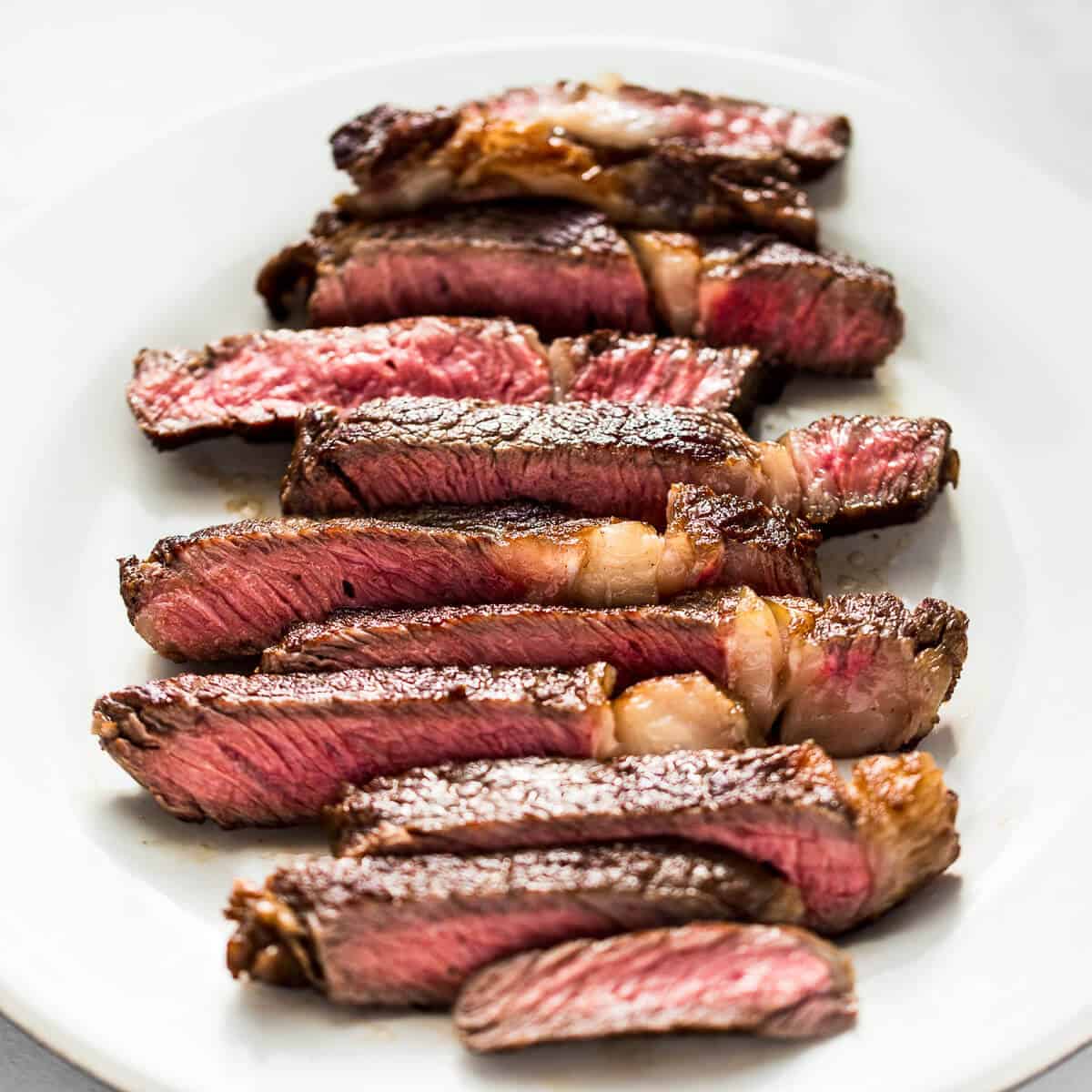
Jump to:
What makes a great steak
Great ribeye steak has the perfect amount of marbling and is seared to perfection with a dark brown crust and finished with a bit of browning butter.
When you cut into it the juices shouldn't flow out of it but rather be inside the meat. Surprised? I know. That's why you should follow pro chefs instead of people that don't know what their doing;)
The texture should be melt-in-the-mouth soft. Not chewy or stringy.
The flavour should be wonderfully buttery, salty, deep umami, and meaty.
Useful equipment for this recipe
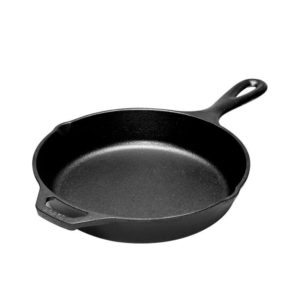
Cast Iron Skillet
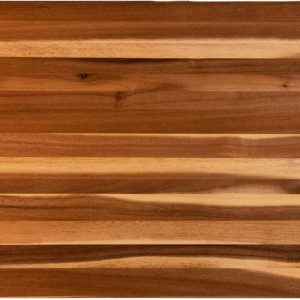
Wooden Chopping Board
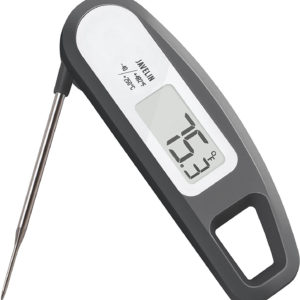
Temperature Probe

Gyuto Japanese Chefs Knife
Ingredients
90% of the success lies in the quality of the ribeye. You want to buy a well-marbled steak which means that it would be grain-fed beef. You could buy on the bone or off the bone. It does not matter.
- Meat - You want to buy a well-marbled steak which means that it would be grain-fed beef. You could buy on the bone or off the bone. It does not matter. Make sure it weighs about 400g minimum of the bone or 600g on the bone.
My recommended choices are the following steaks.
- Ribeye - Like mine and off the bone. Well marbled, delicious and well priced. My go-to.
- Dry-Aged USDA Prime Tomahawk Rib Steak - Best suited for cooking on a barbecue or if you have a large pan and oven.
- American Wagyu Cowboy Steak Gold Grade - Ribeye on the bone. Extremely well marbled and tender. Worth every penny.
- American Waygu Dry-Aged Ribeye - Large, insanely delicious and juicy. Can be roasted whole or cut into any thickness you want your steaks to be.
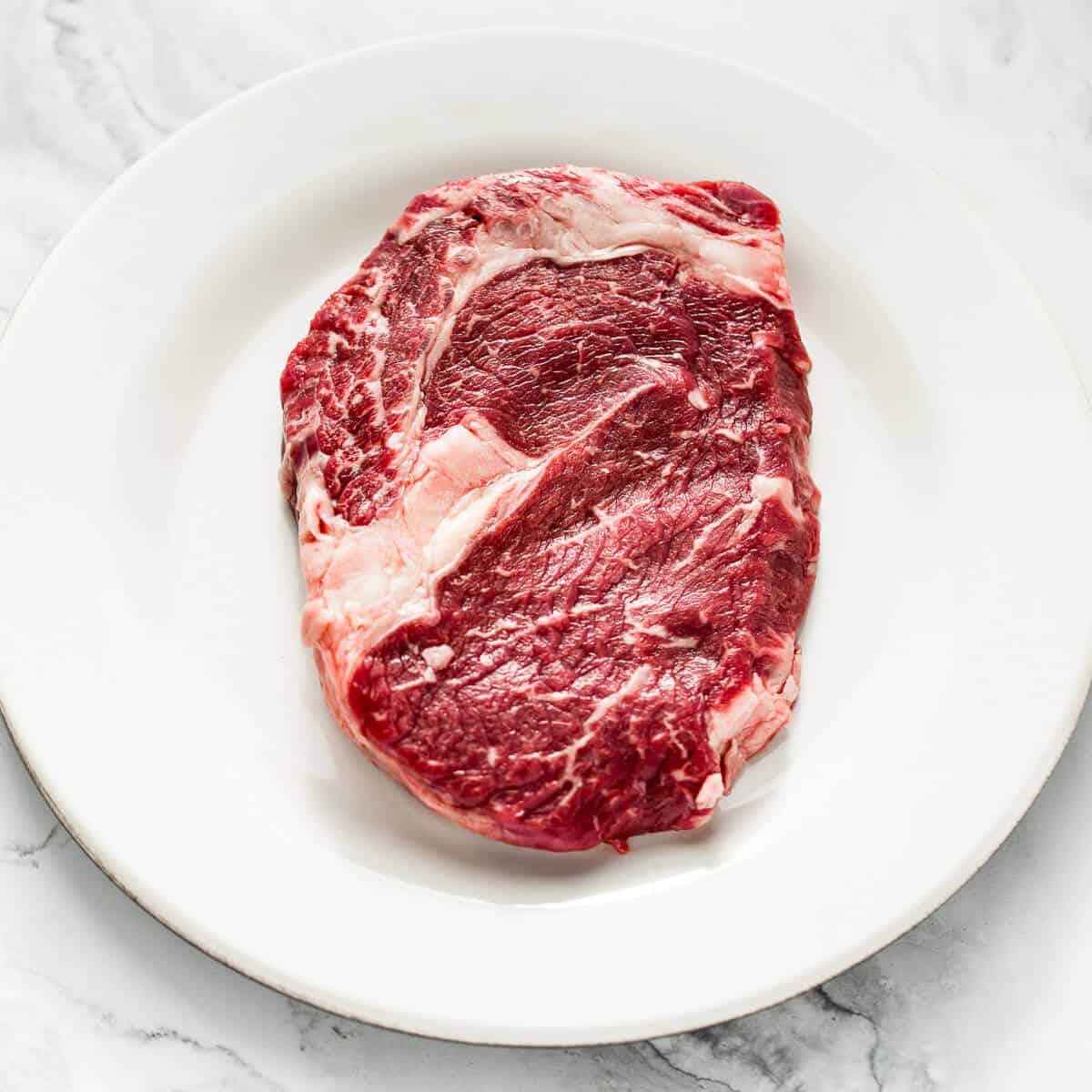
- Oil - Normal canola or sunflower oil for frying. Do not use butter to start the frying process.
- Butter - Good quality 82% fat real natural butter. No margarine.
How to cook it
Follow the steps below and you will know how to cook a ribeye steak to ridiculous perfection. We will cook it in a cast-iron skillet and use a temperature probe to make sure it's perfect.
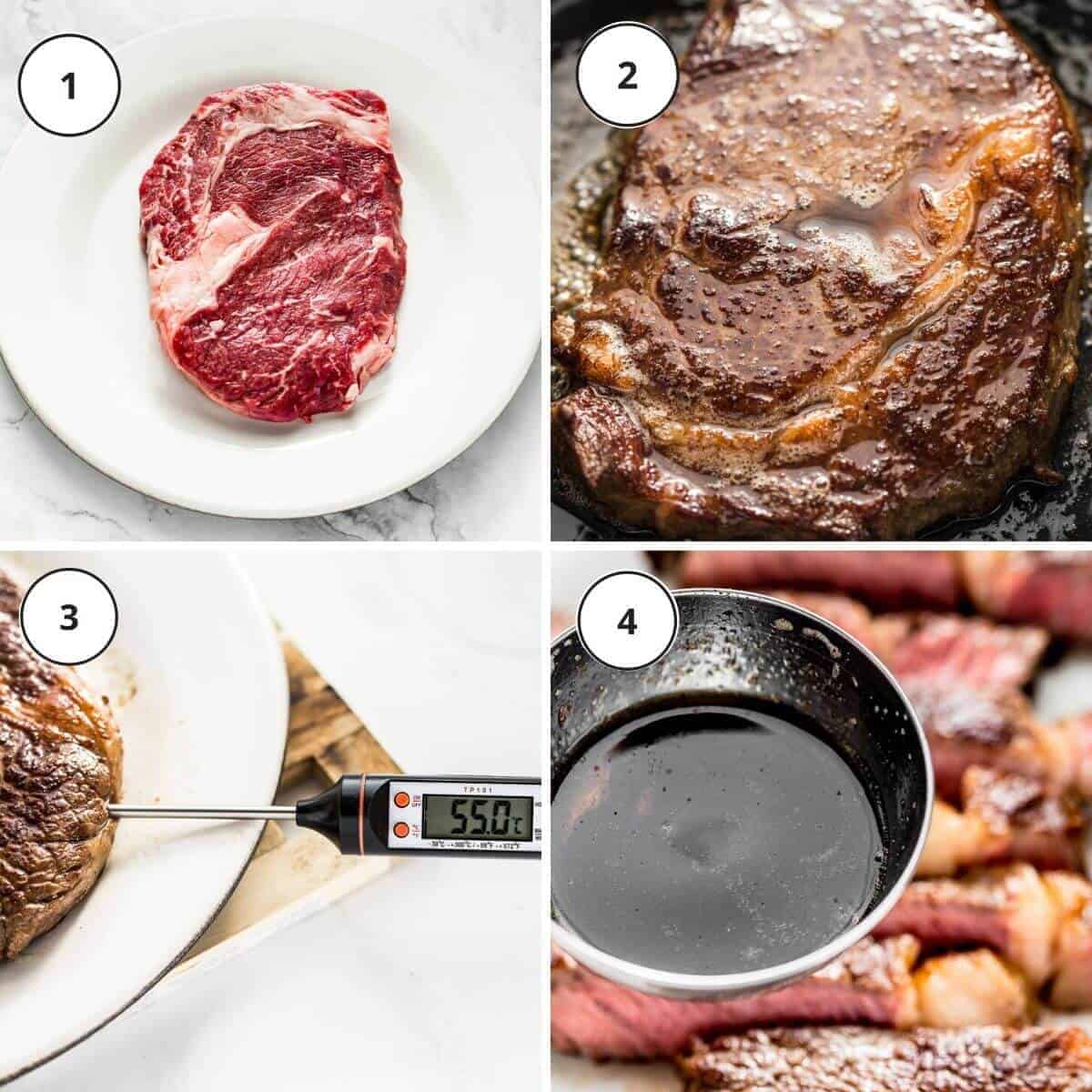
- Heat a large skillet with some canola or sunflower oil.
- Meanwhile, pat the steak dry using a paper towel. (Wet steak boils and won't colour well).
- When the pan is hot and smoky. Only then season your steak on the side that goes into the pan first. Not on both sides like a load of fools recommend. If you season both sides the side on top will get wet because the salt will draw the moisture out of the meat.
- Cook on medium-high heat for 1 minute then season the unseasoned raw side and flip. After one minute you will flip it back and continue this flipping every other 30 seconds for another 3-4 minutes. This is so that the steak cooks evenly and has time to rest as it cooks.
- When the steak has amazing colour and a nice crust on both sides check the temperature with a meat thermometer by sticking into the thickest part as shown below. As soon as the internal temperature hits 45 degrees Celcius or 113 degrees Fahrenheit, add a knob of butter and let it brown while coating the steak with it. When the steak hits an internal temperature of 48 degrees Celcius or 118 degrees Fahrenheit remove it from the pan and reserve the pan juices too.
- Let the steak rest for about 10 minutes. The internal temperature will rise by about 7 degrees Celcius to 55 degrees Celcius. Or by 44 degrees Fahrenheit to 131 degrees Fahrenheit. This is the perfect internal temperature to cook a ribeye or any other steak.
- Slice the steak and pour over the pan juices. Season with some more salt and freshly cracked black pepper.
Tips for success
- Pick high-quality grain-fed steak with good fat marbling for the juiciest results.
- Make sure the steak is nice a thick. Thin steaks will overcook quickly.
- Only season your steak with salt and only on the side that hits the pan. Seasoning steak on both sides draws moisture out of the side that does not fry and results in problems with browning when it does get fried.
- The timings are only a guide so make sure to use a meat thermometer.
- Make sure to rest your steak well before slicing. The internal temperature needs to settle after cooking before it's ready.
- Add only a touch of butter as heaps of butter does nothing for the flavour. It just runs off and you waste good butter.
- Never ever judge the cooking of your steak by using the hand palm method. It's complete nonsense and does not work.
- Season with pepper just before serving. Don't season with pepper before frying as it will burn, lose its flavour and result in bitter flavours.
Serving suggestions
Simplicity is key when you know how to cook a ribeye steak properly. Or any good steak for that matter. a Simple side or salad is all you need. And a bottle of good red wine of course.
- Sides - Make a real steakhouse style creamed spinach, this silky smooth buttery mashed potatoes, honey roasted carrots, or these amazing roasted Romano peppers with tapenade and mascarpone.
- Cooked greens - Healthy and simple like broccoli, bok choy or steamed spinach.
- Salad - Go for a simple green salad or make a proper greek salad or caesar salad. Iconic restaurant salads for an iconic steak.
- Sauce - The only sauce you should ever bring near a good ribeye steak is a simple compound butter, chimichurri sauce or salsa verde at most. My personal preference is a squeeze of lemon juice and seasoned with black pepper and salt. That's it.
- Bread - You need a good crusty bread to mop up the juices. Rye sourdough, sourdough baguettes or Flax wholewheat sourdough are all great.
Related recipes
- Crispy BBQ pork belly
- Bavette steak
- Slow-roasted leg of lamb
- Bacon-wrapped pork tenderloin
- Filipino beef adobo
This site contains affiliate links. I may earn a tiny commission on qualifying purchases at no extra cost to you. By bookmarking these links you help support the upkeep of this site.
If you found this post helpful or have learned something, comment, subscribe, and follow me on social platforms for more tasty recipes.
Recipe
How To Cook A Ribeye Steak
Ingredients
- 400 g (0.9 lb) ribeye steak
- 20 g (1½ tablespoon) cooking oil
- 20 g (1½ tablespoon) butter
- Salt and pepper to taste
Instructions
- Heat a large skillet with some canola or sunflower oil.
- Meanwhile, pat the steak dry using a paper towel. (Wet steak boils and won't colour well).
- When the pan is hot and smoky. Only then season your steak on the side that goes into the pan first. Not on both sides like a load of fools recommend. If you season both sides the side on top will get wet because the salt will draw the moisture out of the meat.
- Cook on medium-high heat for 1 minute then season the unseasoned raw side and flip. After one minute you will flip it back and continue this flipping every other 30 seconds for another 4-5 minutes. This is so that the steak cooks evenly and has time to rest as it cooks.
- When the steak has amazing colour and a nice crust on both sides check the temperature with a meat thermometer by sticking into the thickest part as shown below. As soon as the internal temperature hits 45 degrees Celcius or 113 degrees Fahrenheit, add a knob of butter and let it brown while coating the steak with it. When the steak hits an internal temperature of 48 degrees Celcius or 118 degrees Fahrenheit remove it from the pan and reserve the pan juices too.
- Let the steak rest for about 10 minutes. The internal temperature will rise by about 7 degrees Celcius to 55 degrees Celcius. Or by 44 degrees Fahrenheit to 131 degrees Fahrenheit. This is the perfect internal temperature to cook a ribeye or any other steak.
- Slice the steak and pour over the pan juices. Season with some more salt and freshly cracked black pepper.
Video
Notes
- Leftovers can be store in the fridge for up to 3 days and used in steak salads
- Can be frozen for longer storage
- For best results choose grain-fed beef with good fat marbling as well as a nice thick piece of meat
- Follow my instructions and use a meat thermometer. You will always have the perfect steak
- Ribeye - Like mine and off the bone. Well-marbled, delicious and well priced. My go-to.
- Dry-Aged USDA Prime Tomahawk Rib Steak, 24 oz. - Best suited for cooking on a barbecue or if you have a large pan and oven.
- American Wagyu Cowboy Steak Gold Grade - Ribeye on the bone. Extremely well-marbled and tender. Worth every penny.
- American Waygu Dry-Aged Ribeye - Large, insanely delicious and juicy. Can be roasted whole or cut into any thickness you want your steaks to be.
Nutrition
Want to grill it instead? Comparison of kamado grills.

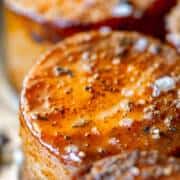
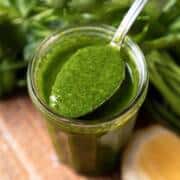

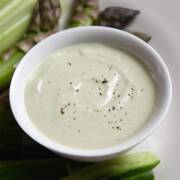
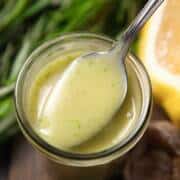
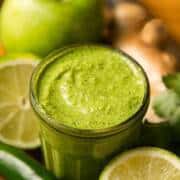

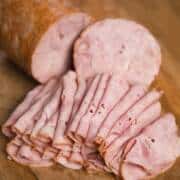
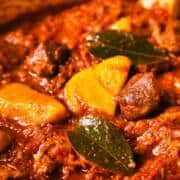
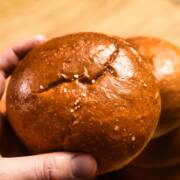
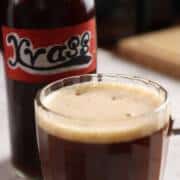
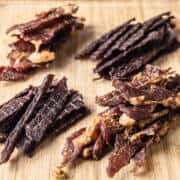
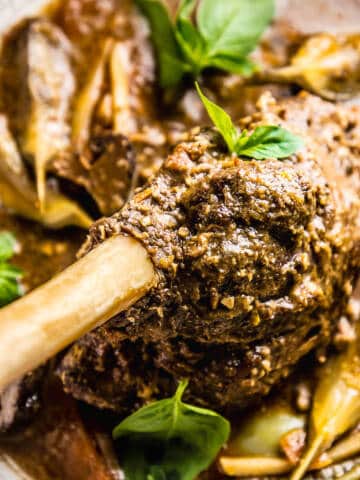


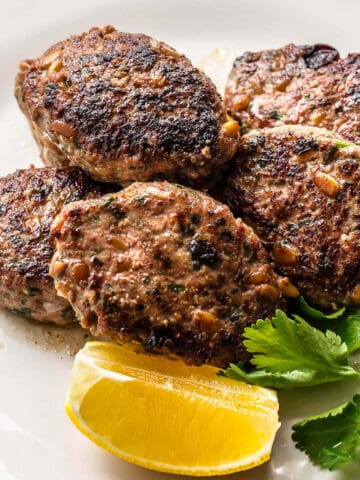
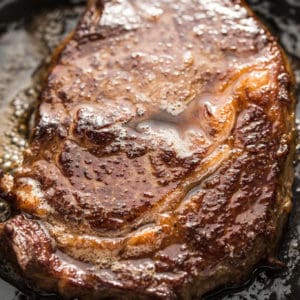
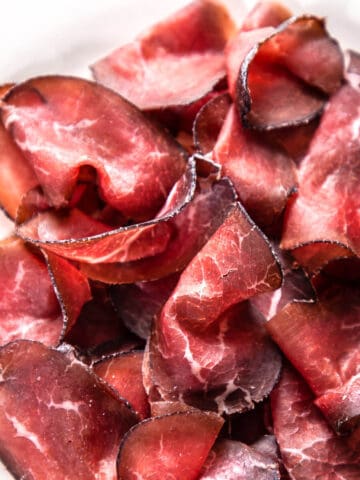

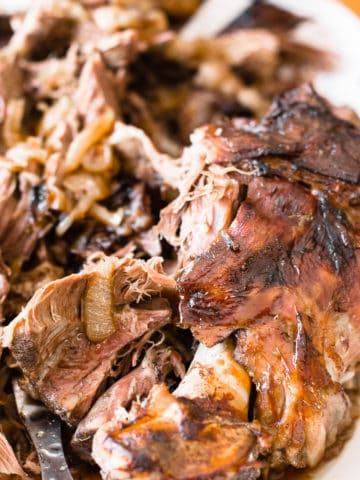
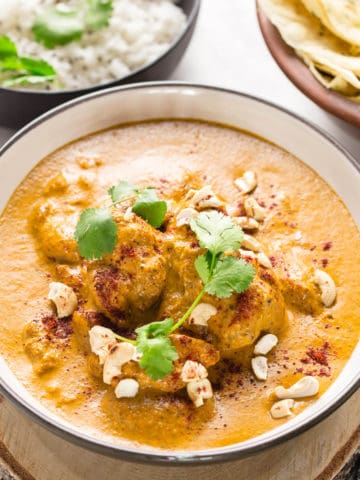
Kacie
Thanks for making me buy a thermometer. Should have done it sooner. would have avoided a lot of overcooked steaks. This was just perfect and it's so foolproof! Plus the chimichurri sauce you posted is amaaaaazing!xx
Charlé
The best decision you could have made!!
Lee
This is truly the best recipe for steak I have found. They turned out absolutely perfect! Thank you!